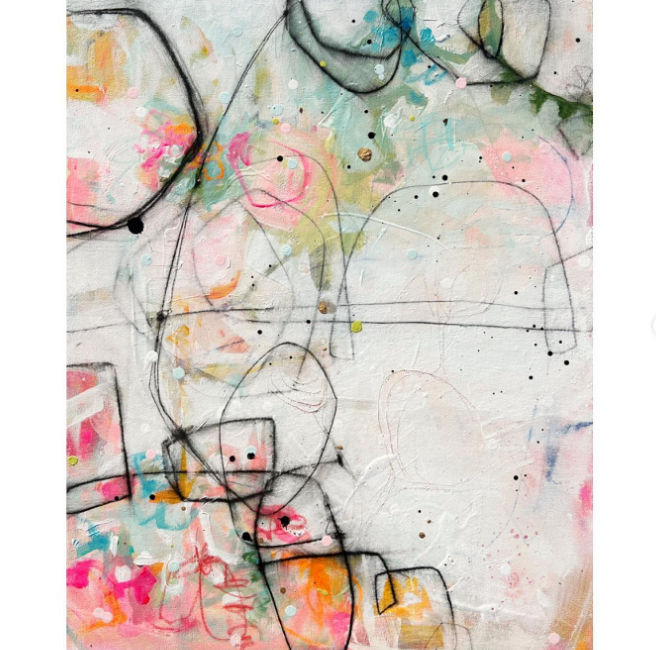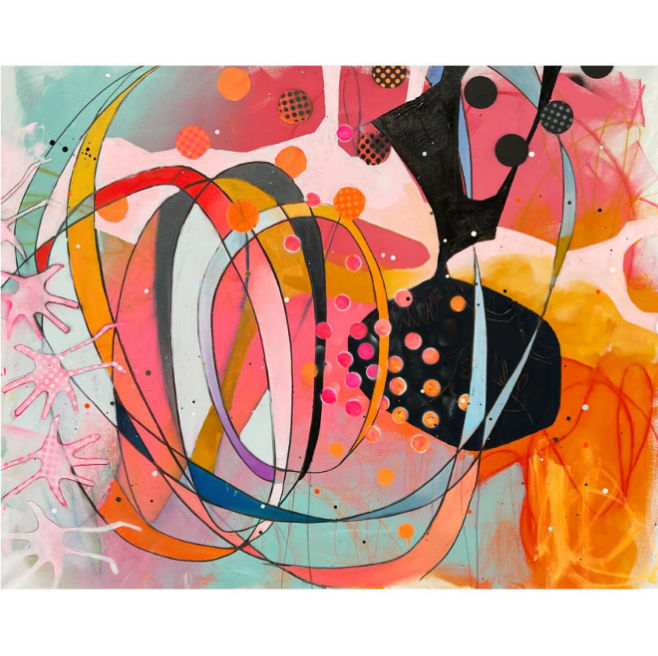Mary payton zajicek

MEET THE ARTIST
Mary Payton Zajicek is an artist from Sioux Falls, South Dakota, diagnosed with Visual Snow Syndrome. She currently works a day job and creates art in her downtime. Zajicek hopes to spread kindness and joy through her artwork. You can find her art and more information at: https://www.instagram.com/paytonology/.
INTERVIEW
Q: How did you get started making art? Is it something you’ve always wanted to do?
A: I’ve been an artist since I can remember. I’d pretty much say all of my life. There have been a couple of times where a few years would go by that it wasn't as important to me, and then there's times like now when it's become a main part of my life.
Q: What is your visual impairment?
A: I have a neurological disorder called Visual Snow Syndrome, which alters how my brain wants to see what I see. So my acuity is fairly good, meaning I can see right, and my eyes are seeing right, but my brain is not interpreting what I’m seeing correctly. It's the craziest thing I've ever been through. It changed my vision so drastically that it's unbelievable.
Q: How has your visual impairment impacted your ability to make art or your experience in the art world?
A: There’s quite a few ways. I wasn't really making art a whole lot at the time that the visual snow really started to get bad. It was a busy time in my life, I was about to get married, and I didn't really have a studio space in my home. And then I had some kind of trauma that caused an infection in my eyes. When that happened, I had to be in a dark room and not use my eyes much for about six weeks. All I could think about was what I was going to paint when I came out. That was the beginning of visual snow for me, and I didn't know it, but it triggered this need to start thinking creatively, to go back to painting, and really start creating again.
It also gives me time when I'm not trying to use my eyes. I have a day job, and when I'm at work on the computer during the day I'm working my eyes too hard. It's painful and hard and it gives me migraines. So when I paint, I just let go and I'm not really thinking, I'm not focusing, I'm not using my eyes in that way. It's been interesting. I try not to make it about the fact that now, I'm a visually impaired visual artist. But people do approach me about it quite often and every interaction counts for me. I love art and I love what I do so much and when anyone else has a reason to ask me about it, whether that's because of my visual impairment or not, then I'm happy about that interaction.
Q: What empowers you as an artist and what inspires you to create?
A: I’ve always been inspired to create. I imagine, like a lot of visual artists. It’s obsessive. I can’t not think about the next thing on the horizon. I dream about it at night, I think about it in every visual thing that comes my way. Since I’ve had the visual impairment, what empowers me the most is making work that I really love, that I feel is successful, that I feel is putting out there what I want to put out there. That’s very empowering. Starting to make things that I'm really proud of is the biggest thing for me right now. Doing the things that I've always wanted to do. I never was able to paint abstracts before this happened to me. Not at all.
Q: What message, if any, do you hope to send others with your work?
A: My work is really joyful. I don't know if that's a message, but the joy and happiness in my work are really important to me. There are a lot of things happening in this world, in this country, that are not joyful. So for me to spread a little bit of that is really important. And honestly, I feel like I can't say enough, that to create and spread that joy and kindness is so good, right? It's just such a good feeling. And I'm so lucky to have that in my life and be able to do that.
Q: Is there anything else you’d like to add?
A: I love art. I want people to find a way to spread some joy and kindness. It's hard right now, for all of us. And just remember, we never know, right? We never know what anybody else has going on. I feel like I pass as somebody who's not visually impaired, and without my white cane, people don't know. It's the same for everyone else.



